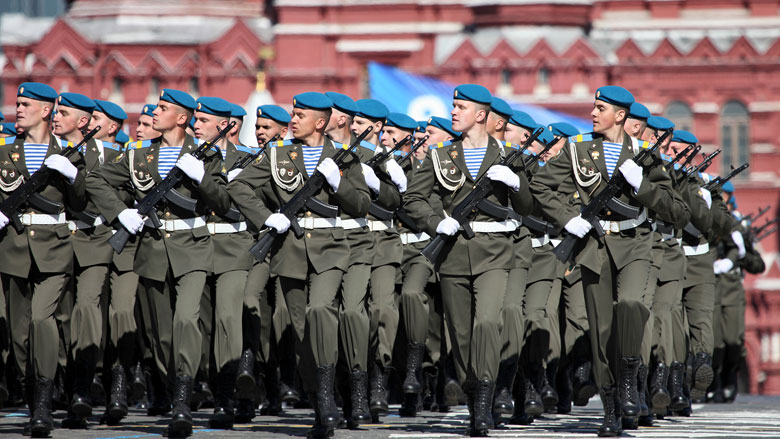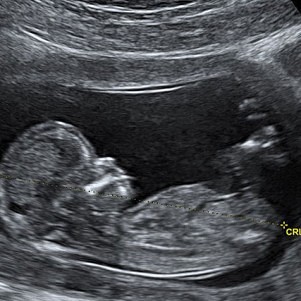As NATO plans more troops for Poland, Russia decries ‘Cold War-era security schemes’
By CNS News | May 31, 2016, 12:43 EDT
 2013 Victory Day Parade in Moscow (Wikipedia)
2013 Victory Day Parade in Moscow (Wikipedia) (CNSNews.com) – NATO’s secretary-general said Monday it will have more troops deployed near its eastern flank with Russia after a summit in the Polish capital this summer, “to send a clear signal that an attack on Poland will be considered an attack on the whole alliance.”
“This will be a landmark summit,” NATO Secretary-General Jens Stoltenberg said during a visit to Warsaw. “We have agreed to enhance our forward presence in the eastern part of our alliance.”
He told reporters the presence would be multinational and rotational, adding that military planners’ proposals were being considered.
“We are discussing the exact numbers and locations on this enhanced forward presence of NATO troops,” Stoltenberg continued. “Let me be clear: there will be more NATO troops in Poland after the Warsaw summit, to send a clear signal that an attack on Poland will be considered an attack on the whole alliance.”
In an interview with the Russian state daily Rossiiskaya Gazeta published Tuesday, Russian envoy to the alliance Alexander Grushko said recent NATO developments showed that the “tendency towards worsening of relations has not yet exhausted itself.”
“Judging by the results of the recent meeting of NATO foreign ministers [preparing for the Warsaw summit] the alliance is set to continue the policy of ‘containing’ Russia, despite its own calls for political dialogue,” he said.
“I don’t want to say we have a ‘cold war’ in our relations with NATO, but the alliance seems to be opting for the cold war-era security schemes,” Grushko said, adding that measures taken by the U.S. and its European allies were contributing to a “confrontational model.”
Exactly how many NATO troops will be deployed in Poland has not been announced, but Stoltenberg did not contradict a reporter’s suggestion that there could be 4,500 along the eastern flank.
He said military planners had proposed “several battalions” in the Baltic countries and Poland.
Apart from those deployments, Stoltenberg said the alliance was investing more in prepositioning equipment and resources in Europe, with the ability to reinforce forward-deployed troops if needed.
The U.S. has announced a quadrupling of funding for its “European Reassurance Initiative” – from $789 million in fiscal year 2016 to $3.4 billion in FY2017 – which among other things will include deployment of an additional armored brigade in Europe. The ERI was established in 2014 in response to Russian intervention in Ukraine.
In Russia’s ‘crosshairs’
At a press appearance alongside Polish President Andrzej Duda, Stoltenberg was also asked about the latest barrage of criticism from Russian President Vladimir Putin over longstanding NATO plans to deploy missile defense systems in Poland and Romania.
He reiterated the position, which NATO and the U.S. have been stating for years, that the missile defense umbrella is neither designed to protect Europe against Russian intercontinental ballistic missiles, nor capable of doing so.
Stoltenberg cited growing ballistic missile activity and proliferation in countries outside the NATO area. The Iranian threat has long been at the center of the NATO and U.S. proposals, although Stoltenberg did not mention Iran by name.
“This is in no way directed against Russia,” he said. “This is about defense against the threat coming from outside the Euro-Atlantic area, from nations which are developing their missile capabilities.”
Any hostile action from the Russians in response to the shield, he added, would be “unjustified, because they know that this is not directed against them.”
Duda dismissed Putin’s criticism as “ritual.”
Russia claims the NATO plan, which was developed in 2010 after the Obama administration scaled down a Bush-era missile defense proposal, aims to weaken its nuclear deterrent.
Putin’s comments, in Athens on Friday, appeared to be aimed at public opinion in Romania, where an interceptor site became operational this month, and in Poland, where groundbreaking for an equivalent site recently took place.
“If yesterday in those areas of Romania people simply didn’t know what it means to be in the crosshairs, then today we will be forced to carry out certain measures to ensure our security,” he said through a translator.
He added that those measures – which he did not elaborate on – would be “retaliatory.”
“It will be the same case with Poland,” Putin said. “We will wait until Poland takes certain action. We won’t take any action until we see rockets in areas that neighbor us.”
Both Stoltenberg and Duda stressed that the system being deployed is a purely defensive one. The NATO chief pointed out that the interceptors were simply that – rockets without warheads designed to intercept incoming ballistic missiles.
Apart from the sites in Romania and Poland, the system will entail U.S. Navy ships with ballistic missile defense capabilities, already patrolling the Mediterranean region from a home port in Spain, and a radar system in Turkey.
— Written by Patrick Goodenough











